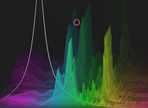
The Use of Delay
A guide to mixing music - Part 86

 Print
Print |
The Use of Delay |
 |
| By Nantho Valentine on 05/01/2016 |  Print Print |
|
You don't know exactly how to use a delay and what can you use it for? Don't worry, we'll get to that, and if you do know, well consider this a brief reminder, which never harmed anyone! It's actually a good thing, if you ask me.
Now, without further ado let's start talking about delay. An effect that can be used as an insert or an aux effect. We've already discussed the pros and cons of each of these approaches in the previous chapter dedicated to reverb, so I won't go into any details here. Personally, I like to use delay as an insert effect on the track I wish to process when I want it to become part of the instrument in question, like a guitar that will be played with the exact same delay live, for instance. Otherwise, in all other cases, I go for an aux bus because it provides more versatility in terms of processing pre- and post-delay. It's important to note a couple of things in this regard, though. Before we begin, don't forget that when used on an aux bus, the delay must be set to 100% wet so that the dry signal is not present in the processed one. On the other hand, when using an aux bus, the processing possibilities are pretty much the same as with a reverb, although adding a distortion plug-in can give more character to the delayed signal, in case your delay doesn't already include such an option.
In the coming weeks we'll look into the different applications of a delay effect in detail. We'll begin by looking at delay as a purely stylistic effect. Although I must admit that I will be brief in this case because it's not a usage limited exclusively to mixing. However, I think it's important to review some techniques that have been used forever and which are very useful, like slap-back and doubling.
I'll then move on to other uses of delay more specific to the mixing stage. I'll show you how to make your mix more cohesive using a delay instead of a reverb. Next we'll see how to work width with several delays. You'll also learn that it's better to alter this particular aspect of a mix using several delay lines rather than the pan pots of your mixer.
To finish, I would like to address the choice of delay plug-ins right from the start. In most cases, for pure mixing applications, I tend to use the delay that comes with my DAW to which I add other plug-ins (EQ, compressor, distortion), either pre- or post-delay, if I think the song calls for it. On the other hand, when I want to get creative with delay, I turn to more complex and specialized plug-ins. Audiofanzine has already published a list of some of the best plug-ins in this genre, which you can check out here.
I'll see you next time to start our adventures with delay!
Reproduction and distribution rights reserved © Audiofanzine 2024.
For personal use only. The user of the site acknowledges that he has read and accepts the general terms of use and that he will respect them.